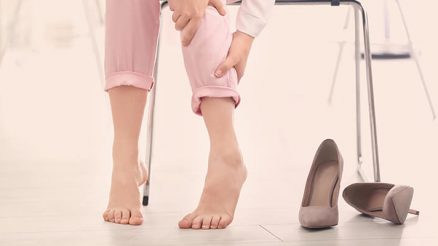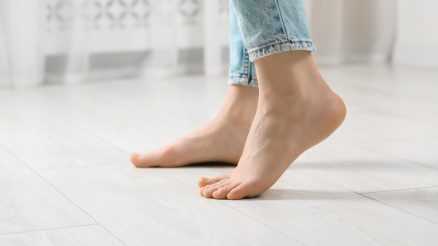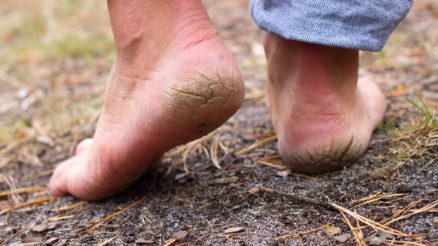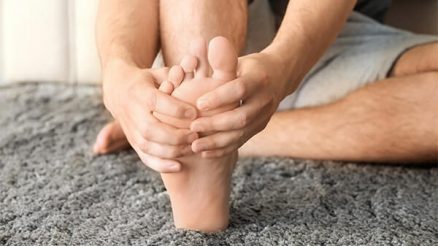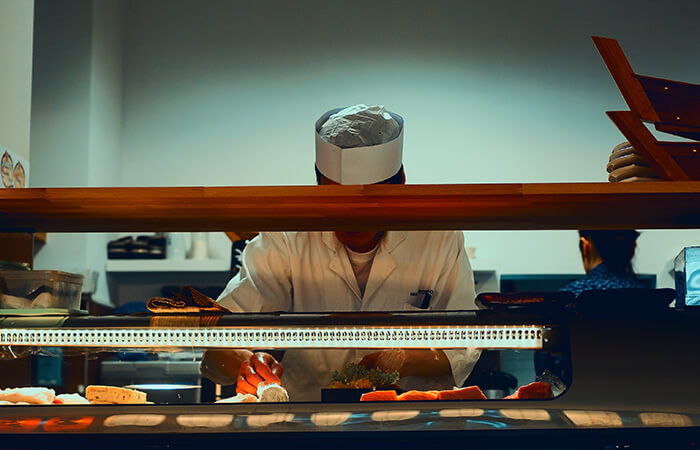
If cooking is your line of work, you might probably have experienced some of the foot problems for chefs. Aside from the usual injuries from burns to cuts, chefs also deal with foot injuries which can be as minor as aching feet to a major trauma such as metatarsalgia.
Foot injuries occur because chefs spend most of their time standing or walking nine to ten hours a day, six times a week. While taking proper measures such as wearing a good pair of shoes is enough, foot problems for chefs may worsen if not given immediate medical attention.
Here are some foot problems that chefs suffer, and how to deal with them.
7 Most Common Foot Problems for Chefs:
Tired, Aching Feet:
There are plenty of reasons why people experience foot ache at some point in their lives. According to studies, women are the most prone to foot ache. It is because most of them wear high-heels and unfitted shoes. Chefs, regardless of their gender, are prone to aching feet due to the long hours spent either walking or standing.
Aside from standing or walking for long hours, stationary standing is equally as bad because it causes the joints to narrow and constricts the flow of blood to the muscles. The surface where you are standing like the hardwood or cement floor contributes to the pain. If you’re wearing uncomfortable shoes, then it adds to the pain as well.
The best way to eliminate this problem is by buying good fitting shoes. At work, find time to sit during breaks. After work, rest your feet and elevate it. If you have extra time on your hands, pamper your feet by soaking it in warm water with salt, and massaging it with lotion or aromatic oils.
Hallux Rigidus:
Hallux means big toe and rigidus means rigid. It is a type of degenerative arthritis which is a disorder on the joint at the end part of the toe. People commonly mistake this disorder from a bunion. Its pain is progressive and disabling. The pain does not go away even if you sit.
Mitigate the problem and the pain with pain relievers. Physical and injection therapy can alleviate the pain as well. You may also want to wear orthotic devices which can be bought at a sporting goods store or pharmacy. This device is usually a heel insert or foot pad that helps treat conditions of the ankle or foot.
It is also advisable to find appropriate shoes, such as a pair with a big toe box. If the pain does not subside despite the solutions above, then the last option would be to undergo surgery, which would depend on the decision of your physician.
Plantar Fasciitis:
This condition is an inflammation of the tissue at the heels (plantar fascia), and it produces a stabbing pain especially on the first steps after waking up. Most of the time, the pain goes away. However, with the type of job that chefs have which requires one to stand almost all day, the pain doesn’t subside.
The pain is due to the tearing of the fascia, which is caused by the intense shock-absorption of the bowstring that supports the arch of your foot.
While the best remedy for this disorder is rest, other options also include physical therapy, stretching exercises, and the use of orthotic devices. You may also put ice on the infected area, or opt for pain relievers. Again, if the pain does not subside even after trying the solutions mentioned above, surgery can help.
Bunions:
It is a disorder on the joint, specifically on the base part of the big toe. This happens when the big toe pushes the next toe. As a result, the infected joint gets bigger and eventually sticks out. It can be hereditary or due to arthritis. Also, wearing ill-fitted shoes may be the cause.
The best thing to mitigate this problem is to wear comfortable and well-fitting shoes. You may add shoe inserts to balance the pressure on your feet. If it becomes painful, pain relievers and ice compress can help.
Tarsal Tunnel Syndrome:
It refers to the squeezing or compression on the back part of the tibial nerve causing the symptoms to appear. This syndrome can be comparable to the carpal tunnel syndrome except that the latter is a disorder on the wrist. It causes numbness, pain, or burning sensation.
This syndrome is due to the overuse of the foot. Therefore, the main remedy is rest. Using ice compress and anti-inflammatory drugs can help.
Morton’s Neuroma:
It is also known as interdigital neuroma which affects the nerve in the toes, and it happens when a foot nerve thickens or becomes irritated. This causes a tingling sensation between the toes and becomes worse over time.
To mitigate the problem, wear comfortable shoes. You can use injections or painkillers to get rid of the pain. If you’re a bit overweight, it can also contribute to the problem. So, another solution is to lose some weight.
Metatarsalgia:
It is the inflammation of the ball part of the foot and is one of the foot problems for chefs that are due to overuse. The pain is located on the end part of the metatarsal.
Using ice compress, pressure bandage, and orthotic devices can help in mitigating the pain. Do exercise or stretches gently. Use the right shoes to wear to ensure proper support.
What to Look for in a Good Pair of Shoes?
If you are a chef, it is more challenging to look for the right pair to wear because you have to make sure that it is not just comfortable, but it has to protect you from common foot injuries.
It is best to choose a pair with good padding arch and support. The heels should be at the maximum of 2 inches. Since the surface of the floor contributes to the foot problems. Select the ones with a comfortable footbed too.
Treat your shoes as an investment. It will save you a lot of money and time in return. Spending some extra bucks is better than spending a fortune to treat the foot problems for chefs.





